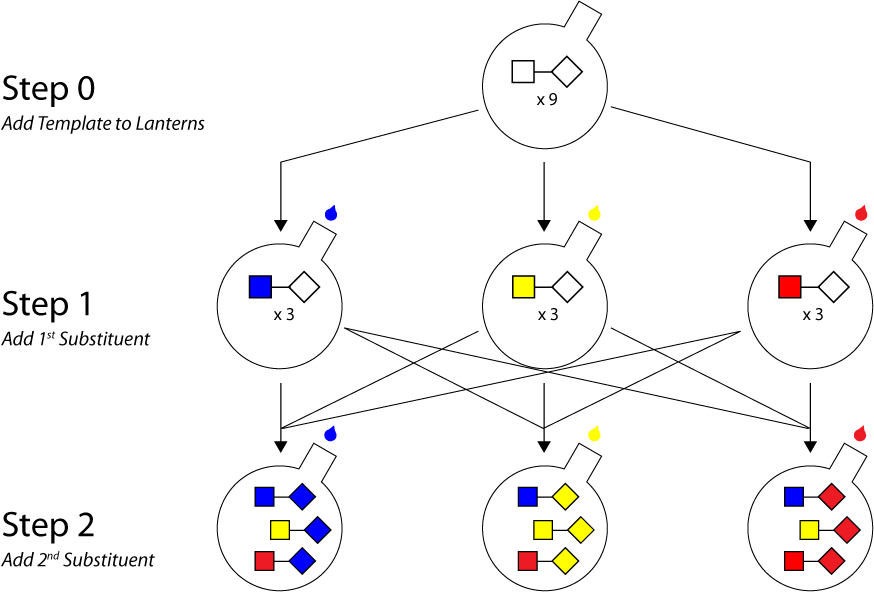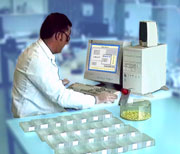High-throughput combinatorial synthesis
|
||
|
|
Combinatorial chemistry is capable of generating vast numbers of individual compounds by exploiting various points of chemical diversity on the pre-cursor. For instance, the number of compounds produced from a molecular template containing 3 points of diversity and using a list of eight substituents at each point is 8x8x8, which equals 512. Very quickly, the number of reactions taking place might well become unmanageable.
SynPhase Combinatorial offers a choice of tagging strategies to overcome these challenges, greatly simplifying the task of keeping track and manipulating compounds. Choosing the best method will depend on the number of compounds in your library, the level of handling efficiency required and your project budget.
The principal strategies enabled with SynPhase Lanterns are
- Split and Pool Synthesis
- Multipin Array Synthesis

Creation of a 3^2 combinatorial library using the split and pool method with SynPhase Lanterns.
No. substituents = 3, No. attachment points = 2




